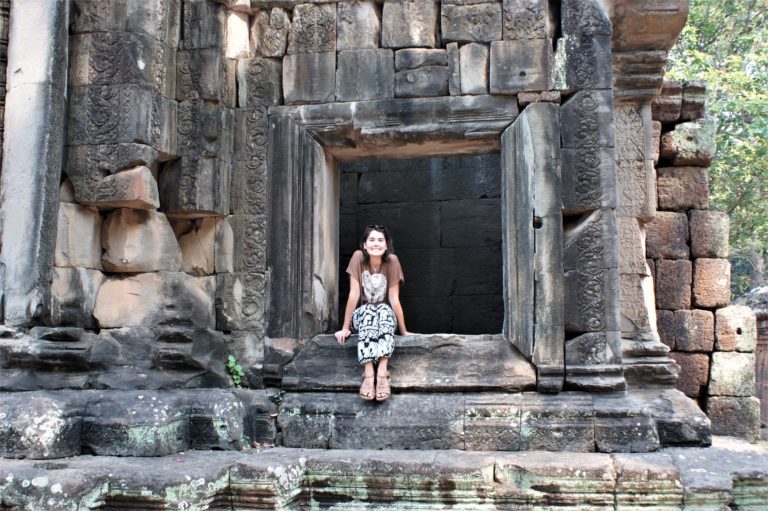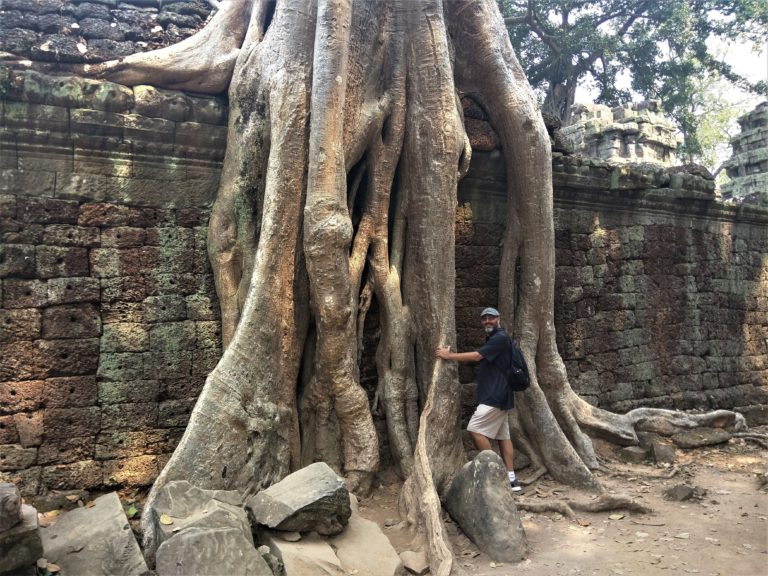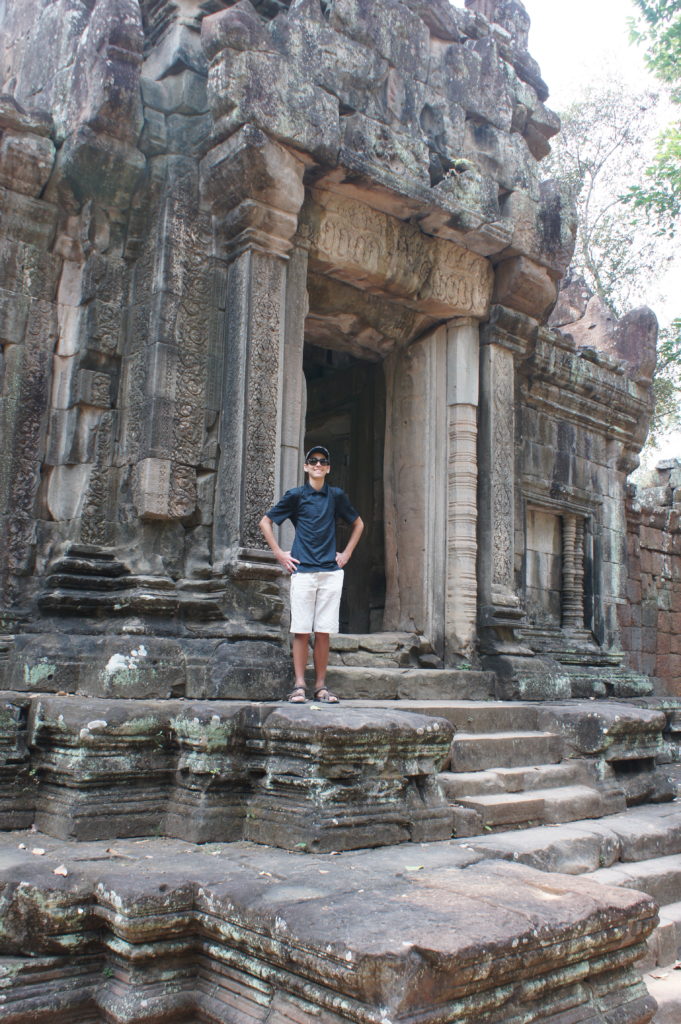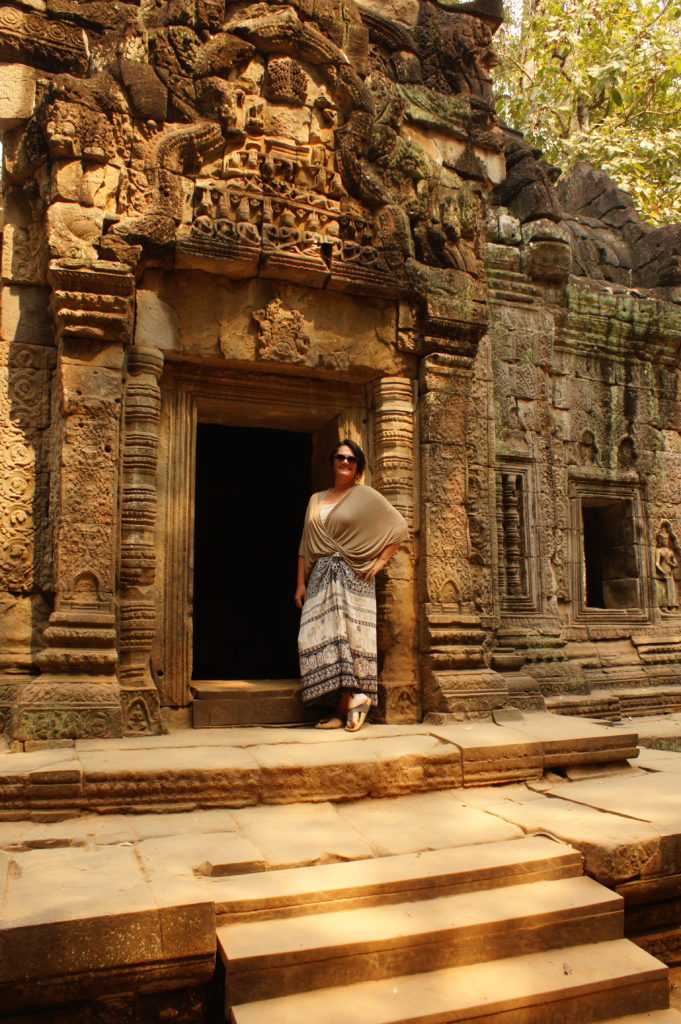
We walked down the dusty road in the chill morning air. I looked to take in our surroundings and saw only the blackness of pre-dawn. Flashlights and the soft glow of cell phones bounced around in the distance, quietly assuring us that this path lead somewhere.
We heard soft voices ahead as we approached the ticket gate. A woman stepped out from the corner and pulled Janna and I aside. She motioned to our legs, bare and uncovered sticking out of our shorts, and said we couldn’t go into the temple dressed like this. A holy site requires appropriate dress, she said. I remembered reading about the dress code in a guide book earlier, but had apparently stopped reading at the bare shoulders and didn’t make it to the legs. I pointed to Jeff and Marco’s bare (and short clad) legs, but she smiled and said, “men are ok, women not”. Wonderful. Luckily, I was wearing a sarong as a scarf and could now wrap it around my waste into a travel ready skirt. Janna’s solution was not as easy. After buying an extravagantly priced (because we had no option) pair of traditional Cambodian elephant print pants, we were on our way.

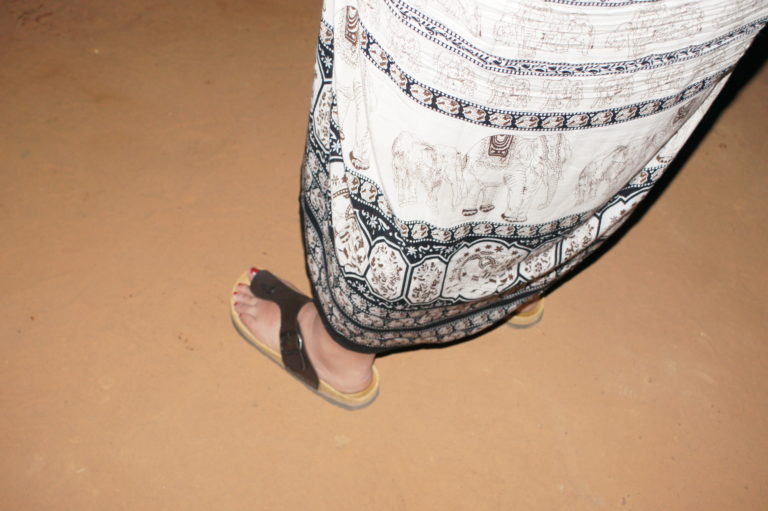
A photo of the path leading into the temple before dawn. Yes it was that dark.
My sarong – Cambodian style.
We stepped onto a rocking platform that swayed under our weight. It reminded me of the dock at our family’s cabin at Big Lake, but it was so dark we couldn’t even make out the water that we must have been crossing. We trekked through the darkness, following the periodic lights from fellow travelers in the distance. Climbing up stone stairs we walked through a large stone hallway and down another set of stairs. Ahead of us a vast field began to take shape as the sky lightened with the soft glow of dawn. In front of us, the distinctive cone shaped pillars of Angkor Wat began to slowly take form.
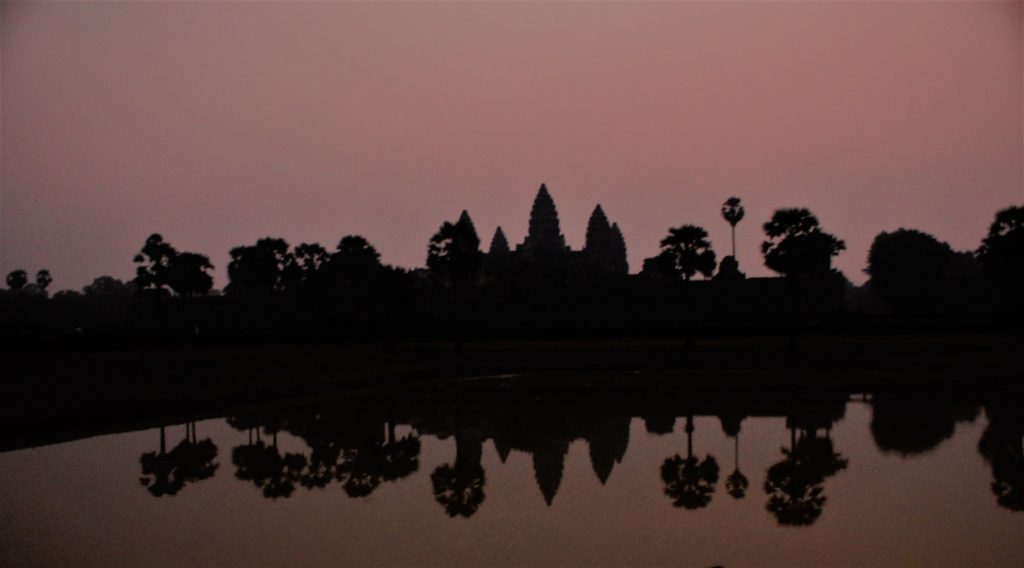
Thousands of people visit Angkor Wat (known as the city of temples in the Khmer language) each year. A massive complex of ancient temples built by the Khmer Kingdom some 900 years ago, each of the many temples built in this “city of the gods” were built by Khmer kings . These kings seemed to be in a competition to outdo their ancestors with the grandness and scale of their temple projects, each reign progressively becoming more grand than the last. The competition effectively ended with Suryavarman II when he had the massive Angkor Wat built which today remains the largest religious structure in the world.
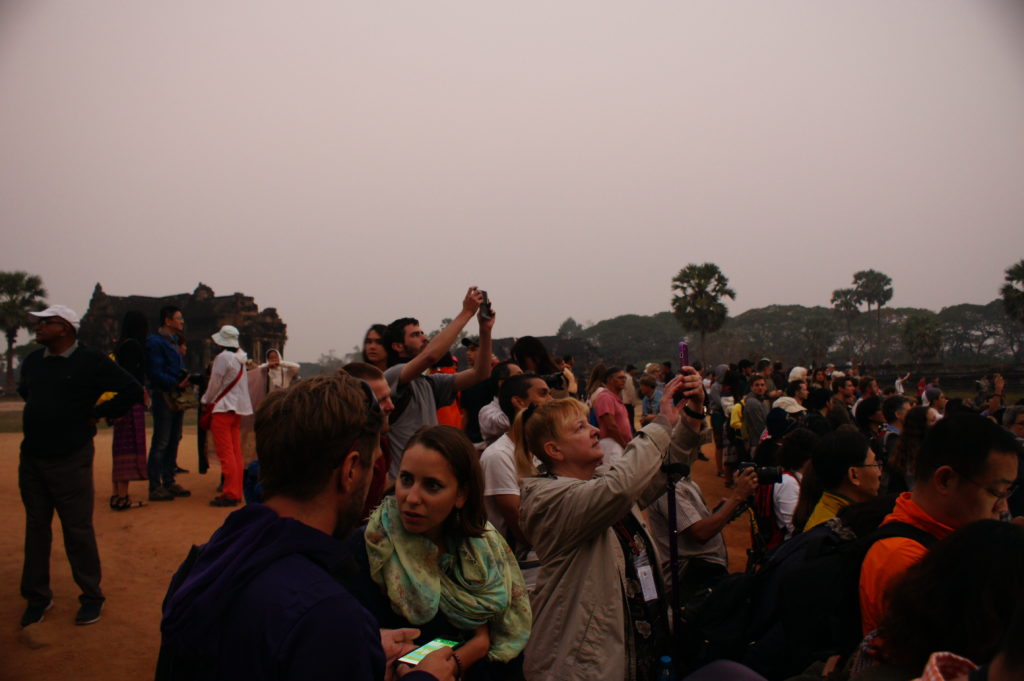
The Angkor temples represented heaven on earth for the Khmer as they brought home the many gods of Hinduism to the Khmer people. In reading about these temples and hearing about them from other travelers, I had envisioned ruins in the jungle and had expected to be impressed, but I had not envisioned nor expected the astonishing beauty and grace of the park itself.
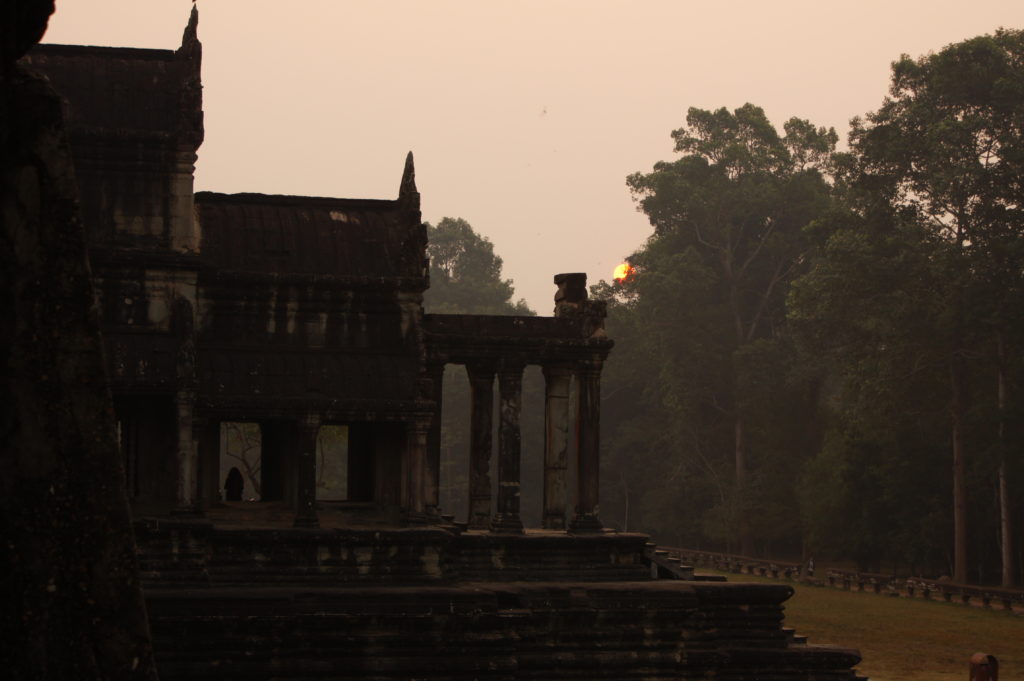
Every corner of the park transports you to a world beyond ours today. Quaint tuk-tuks pulled visitors and elaborately adorned elephants walked the wide tree-lined roads. Despite the presence of visitors, the park had a calm and hushed ambiance that allowed you to find solitude in an empty hallway or enough silence to listen to the rustle of the leaves of the forest. It was truly enchanting.

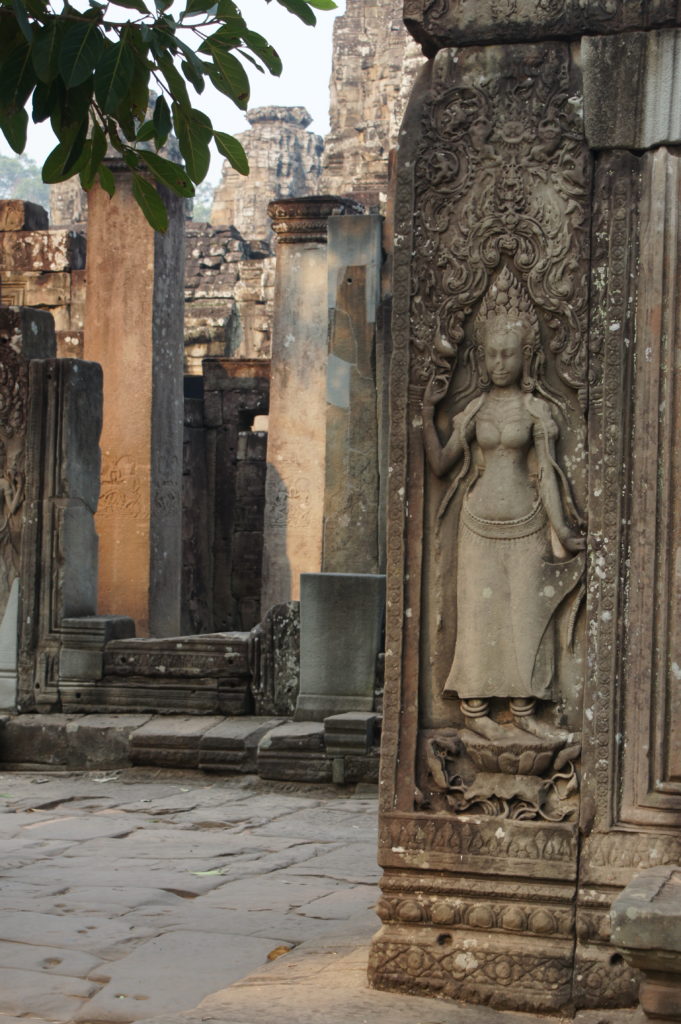

The many temples that make up the Angkor Wat complex and archaeological site are spread out among a large city-like area. Some of the temples are quite large, but the largest is Angkor Wat itself. Visitors can pick and choose the temples to visit as seeing them all would take quite some time. The actual archaeological site itself spans some 400 square kilometers.

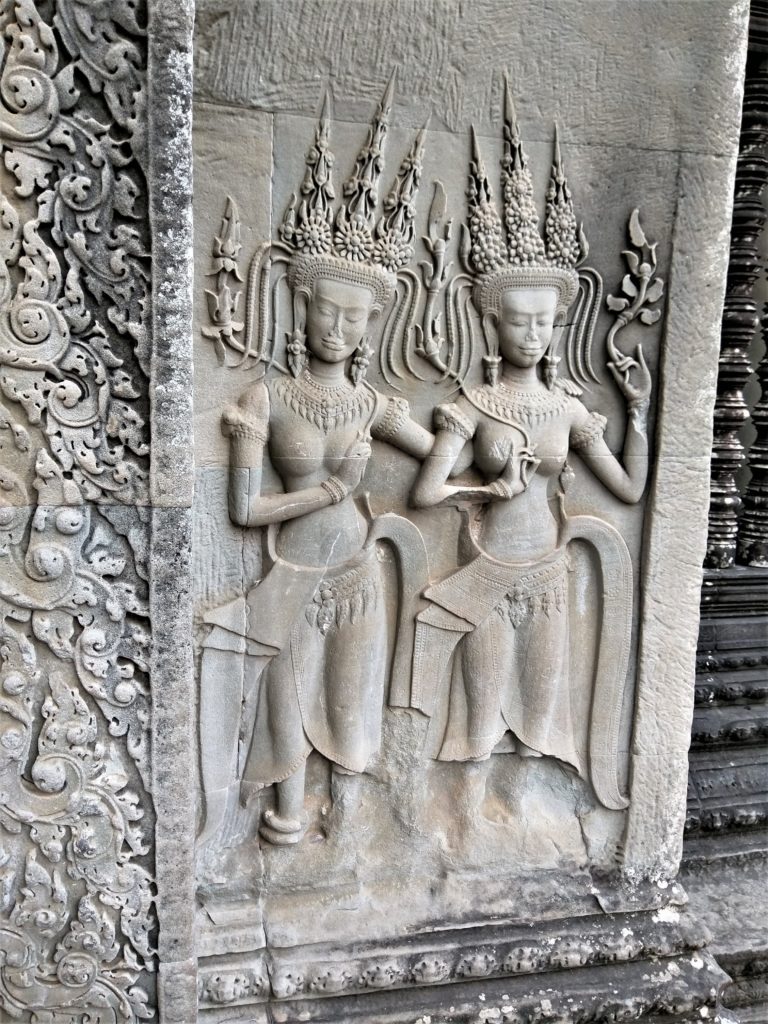

The park takes many days to explore fully. Some people buy 3 or 5 day passes to explore at their leisure. We met a couple from San Francisco, walking rapidly by us at one of the temples, that had an afternoon to visit as part of their 6 day long trip to Asia which also included Thailand, Malaysia, Laos, and China. We had only a few days in Cambodia alone so devoted one complete day to the temples as un-rushed as possible.
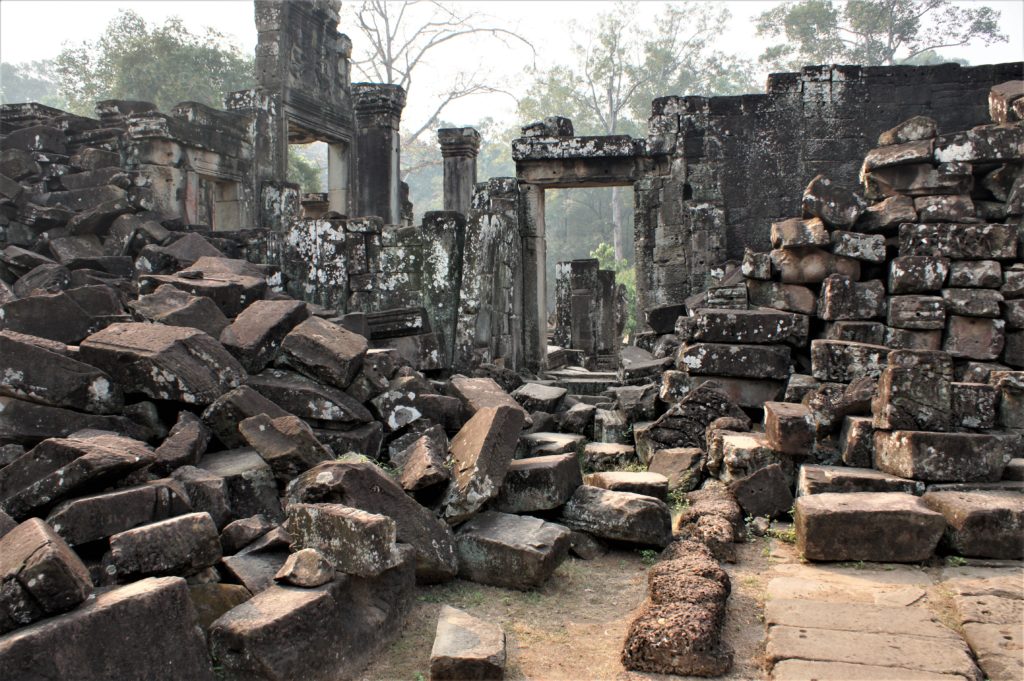
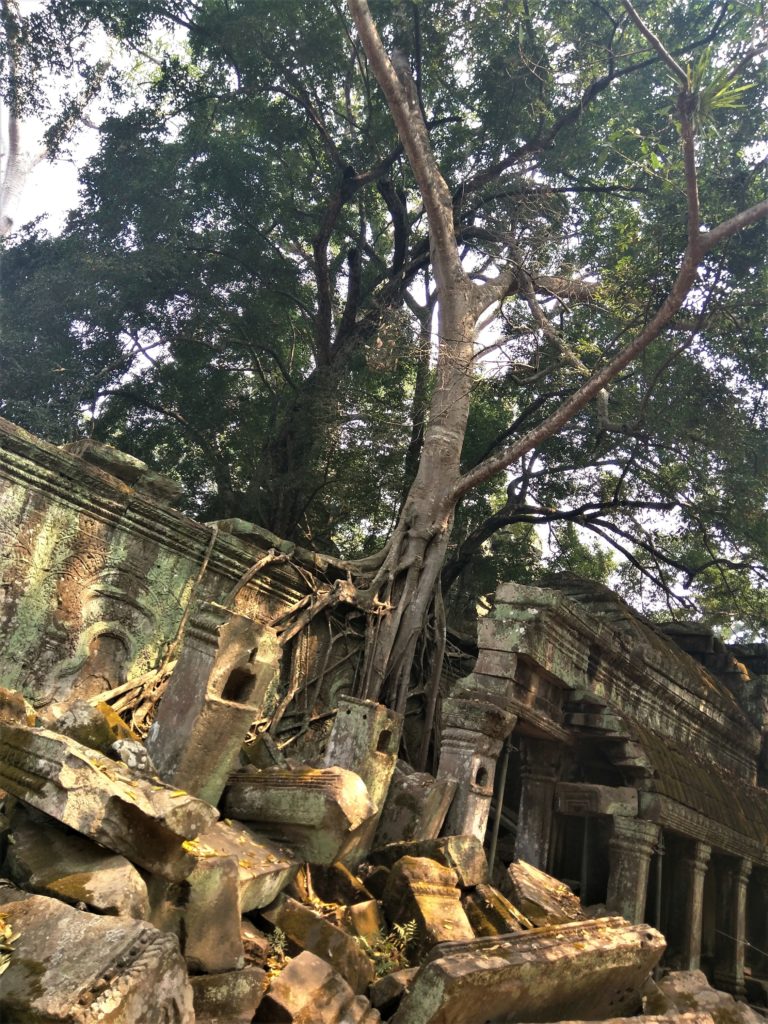
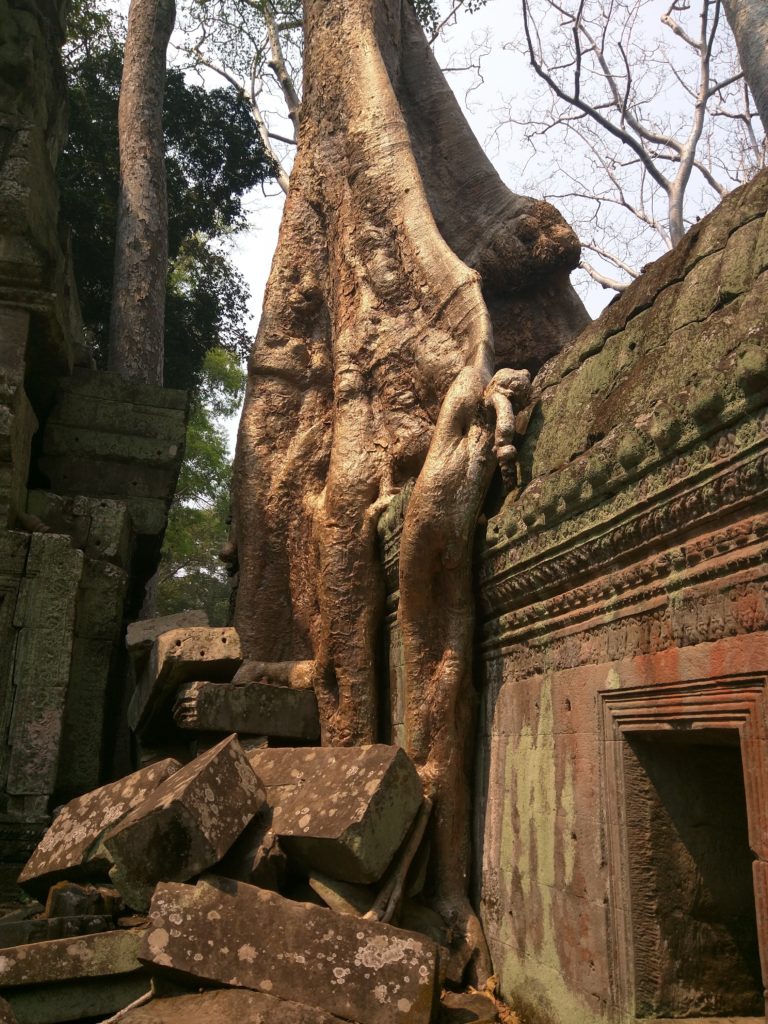
We hiked and climbed and discovered countless treasures in our day spent at Angkor Wat. Despite being on our feet since sunrise, as evening approached none of us was ready to admit we were done. Each of us felt like we had visited heaven on earth and could have stayed longer.
